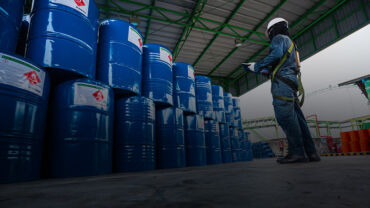WCO 2017 Version of the Harmonized System
Every 5 years the World Customs Organization has the duty under the 1983 HS Convention Article 16 to provide an update amendment, guideline and recommendation of an “Internationally Standardized and Recognized System of Names and Numbers”. The “Harmonized Commodity Description and Coding System”, abbreviated as “HS”, involves +200 countries globally and is designed to classify and standardize traded products among members.
The “HS” comprises of around 5,000 commodity groups and is divided into 8 sectors: agriculture, chemical, wood, textile, base metal, machinery, transport, and other sub-group sectors. These groups cover various types of materials and products traded in the global trade environment. Each of the “HS” is identified by a 6 digit standardized and international recognized code, arranged in a legal and logical structure, and is supported by a set of defined interpretation rules.
Under the new 2017 version there are a few significant changes and amendments. The major change comes from the amendments of food, fish and fishery, forestry products, some amendments of chemical and pharmaceutical substances, and new industrial and manufactured products which use new technology. Now that the new Harmonized System has entered into force, it is expected that Thailand will localize and implement a recommended amendment that is specific to the country interpretations and requirements, keeping in mind the goal of harmonization.
Under the new 2017 version there are a few significant changes and amendments. The major change comes from the amendments of food, fish and fishery, forestry products, some amendments of chemical and pharmaceutical substances, and new industrial and manufactured products which use new technology. Now that the new Harmonized System has entered into force, it is expected that Thailand will localize and implement a recommended amendment that is specific to the country interpretations and requirements, keeping in mind the goal of harmonization.
Thailand Harmonized Tariff Code
Under the Thailand tariff code structure, each code contains a 6 digit WCO standardized code and adds 2 additional digit codes that represent ASEAN[1] subheadings, with an additional 3 digits of localized statistical code. Sometimes another 2 digits are included that signify Thailand duty preferential scheme codes.
The WCO 2017 Version and the ASEAN HTN Adoption
Thailand as one of the World Customs Organization (WCO) members also has the responsibility to adopt the WCO recommended amendment (6-digit) as well as follow ASEAN’s Protocol Governing the Implementation of the ASEAN Harmonized Tariff Nomenclature to harmonize the tariff nomenclature at the eight-digit level (AHTN Code). This adoption includes the responsibility of providing correlation tables between version 2012 and version 2017, Explanatory Notes, the Classification Opinions, the Alphabetical Index and the HS online database for the public.
The harmonized tariff schedule of Thailand is enforced under the Customs Tariff Decree B.E. 2530/1987, and this sixth version (B.E. 2559/2016) was already entered into force since January this year. In this edition, there are a total of 10,813 subheadings of classified products, organized into 21 sections and 96 chapters similar to WCO’s HS Nomenclature. This is fairly large in terms of new, renumbered and redrafted subheadings consequential to the WCO’s amendment to the newly created and expanded scope.
The Consequences of the Classification Change Management
Besides the primary focus of the internal classification database, organizations should be able to anticipate and define key impact areas associated with the adoption and implement controls around these key areas:
- Product Descriptions and Definitions: companies should ensure that the transition from the previous version to the new 2017 version is smooth and the product descriptions and the consequences of any change are properly reviewed and defined. Misclassification and misunderstandings of the tariff code could lead to legal obligations and heavy burdens in the form of penalties from incorrect interpretation.
- Duty Rates: companies by now have reviewed the duty affects, but important is to implement an ongoing process that evaluates those changes and take proper measures to maintain the benefits of import duty and relevant preferential schemes. Under the International Agreements there are preferential duty rates that Thailand has been affected by the classification changes. For example, the Preferential Market Access and the Duty-Free Treatment to Least-developed Countries such as Duty-free, Quota-free (DFQF) Access Scheme, the WTO’s Information Technology Agreement, the Global System of Trade Preferences (GSTP), etc.
- FTA Utilization Benefits: This is an issue not to be overlooked as all of the FTA agreements use the harmonized tariff codes as one of the factors determining the rules of origin eligibility and its tariff schedules that indicate the duty rate; also dependent on the codes. Therefore whenever there is any change of tariff codes, product descriptions and definitions, the rules of origin based on product description (and the tariff codes) should also be updated in order to accommodate the change as well. In addition one should clearly understand that the rules of origin condition and the FTA privilege eligibility are directly dependent on tariff code and tariff code versions stipulated under each agreement. Generally FTA agreements use different versions of harmonized tariff codes and as a result there are differences of versions (such as HS2002 for ASEAN-Japan, ASEAN-India, Thai-Japan, Thai-India, Thai-Australia; HS2007 for Thai-Peru; and HS2012 for ASEAN ATIGA, ASEAN-China, ASEAN-Korea, Thai-Chile and ASEAN-Australia/ Newzealand) that can be indicated in the certificate of origin depending on each agreements operational procedure.
- Permits: In Thailand import and export permits are identified and listed by the tariff codes. It is advisable to check the tariff codes before submitting a permit application to related government authorities and presenting the declaration to the customs department.
- Anti-dumping (ADD) Regulations: In general, the Anti-dumping (ADD) Rules and Counter Veiling Duties (CVD) are also directly dependent on the product descriptions, country of manufacture, manufacturer and the Tariff Codes. Companies should always be aware of their sourcing changes and determine if the commodity they are sourcing has a case of ADD/CVD in force.
- Bonded Warehouse and Duty Free Zone: Goods stored in Bonded Warehouse and Duty Free Zone should note the tariff changes when transferring goods. Duty calculations should be declared under the tariff code version that reflects “the export date” in accordance with the customs tariff in force at the time of the release of such goods from the bonded warehouse and at the time when such goods have been released from the duty free zone, whether they are in the same condition of the importation or otherwise.
There are, however other minor and relevant impacts that companies should be able to take into consideration depend on the business operations and structures, with both opportunities and challenges. But the most important aspect is to act proactively setting up processes to predict and prevent any unexpected circumstances while taking advantage of any relevant regulations and changes.
Companies should also be clear how to manage their customs and trade operations and respond to required actions for both updates appropriately being mindful of the import and export operations associated with the tariff classification. It is critical that relevant processes and proper measures should be reviewed and rigidly defined before taking any actions on these changes to reduce any unforeseen burdens and risks from the change.
Learn More About ONESOURCE Global Trade Classifier
Sources
http://www.wcoomd.org/en/topics/nomenclature/instrument-and-tools/hs_convention.aspx#preamble
http://www.wcoomd.org/en/about-us/legal-instruments/recommendations.aspx
http://www.customs.go.th/data_files/d81d9faa35f916267aa83a4ae416df85.pdf
[1] Association of Southeast Asian Nations






